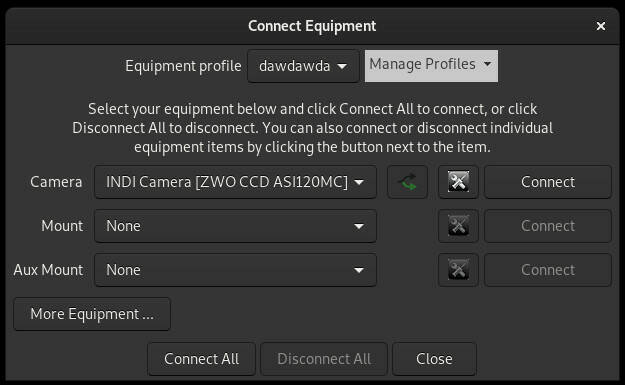


Unfortunately, this generally won’t work. You might think you can use this natural drift for dithering. If you aren’t guiding, and in some cases even if you are, you may notice your stars moving between frames from polar misalignment or flexure between your guidscope and imaging scope. Without a big enough shift in pointing, your pixel offset will be too small to make a difference when stacking the results. The same idea applies if the optic you’re guiding with has a longer focal-length than your imaging scope, which might happen if you’re shooting with a telephoto camera lens on top of your normal telescope. You may want to increase this value a bit more if you are using a DSLR or one-shot color CCD camera to compensate for the 4-pixel Bayer color filter array overlaid on the detector. The aggressiveness setting controls how far the mount pointing will move between exposures.
#ASTROGUIDER VS PHD2 SOFTWARE#
The autoguider software re-acquires the guidestar and begins guiding, and your camera-control program then starts the next exposure. Your camera-control software does just what I did with the ST-4: it pauses the imaging sequence between exposures and sends a dither offset to the autoguider program, which then passes the command on to the mount control driver, which moves the scope. Aggressiveness determines how far the scope pointing will move between exposures. Dither parameters control window in BackyardEOS. High-end software including MaximDL integrates all these functions.
#ASTROGUIDER VS PHD2 GENERATOR#
Or you could use Sequence Generator Pro with either PHD2 or MetaGuide. Programs including AstroPhotography Tool, BackyardEOS, or BackyardN IKON can work with PHD2 for autoguiding. The software that controls these different pieces of hardware enables them to communicate with each other to get the job done properly. We use a computer to control the telescope mount, imaging camera, and autoguider. Thankfully, in today’s modern digital world we can automate many processes in astrophotography. I used to dither by turning off the autoguider, manually moving the scope a little bit with the hand controller, turning on autoguiding again, and finally starting another exposure.
#ASTROGUIDER VS PHD2 HOW TO#
How to Ditherīack in the days of film, I used an SBIG ST-4 autoguider, and I manually triggered a cable release for every exposure. This allows them to be removed with Sigma stacking. When the image is aligned on the stars, hot pixels are in a different place from frame to frame. Hot pixels appearing the same place on your camera’s detector, but stars shifted from frame to frame with dithering. For the Sigma algorithm to work, you need a minimum of 10 frames. This means that if you have 10 frames and a hot pixel is only showing up in one particular location on a given frame, the algorithm replaces it with an average from the other frames. The Sigma rejection stacking method, available in most astronomical image-processing programs, applies a mathematical algorithm to examine every pixel and discard outliers that are very different from the average in your group of images. This shift places the hot pixels in a different place in every frame. Later, as you process your images, you’ll align and stack individual frames based on the stars in each image. By moving the pointing of the telescope, dithering shifts the stars to a slightly different place in each frame. Hot pixels, which are individual pixels that look brighter than they ought to, lie in the exact same place in every exposure. This allows hot and cold pixels, cosmic ray artifacts, and fixed pattern noise, and even satellite or airplane trails to be removed during the stacking process. In astrophotography, to dither means to shift the pointing of the telescope slightly in random directions between exposures.


 0 kommentar(er)
0 kommentar(er)
